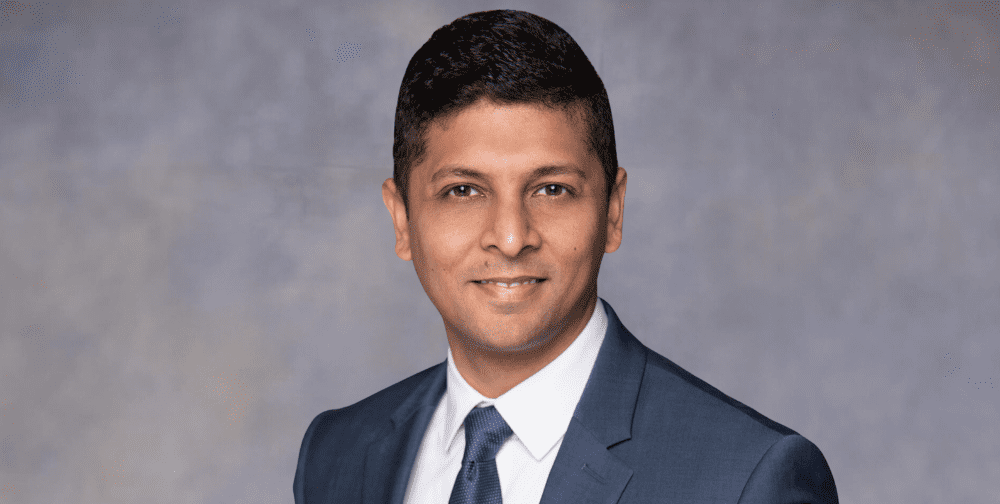IT Director Akbar Lakhani’s Infrastructure Transformation Implements Cutting-Edge Cybersecurity

As Director of Information Technology at a global alternative investment firm, Akbar Lakhani leads high-performing engineering teams and projects, and works with enterprise management to deliver outstanding outcomes at the highest levels of operation. Lakhani, who holds both M.B.A. and M.S. degrees in Information Technology, most recently led a transformative infrastructure project implementing enhanced cybersecurity protections for his firm.
TechBullion recently spoke with Lakhani about how he has delivered value and results as a leading IT executive for more than 15 years, how AI and advanced technologies are revolutionizing cybersecurity, and his forecast for the industry.
Please tell us about your current role. It seems that you leverage your academic background and professional experience in both IT and business. How does one enhance the other?
Over the last decade, IT innovation has skyrocketed, and the field continues to be highly dynamic. Keeping up with and ahead of technological advancements, and the concurrent cybersecurity threats that each new development unleashes, requires more than just technical skills. To be a successful IT leader in this competitive environment, you need strong engineering expertise to understand the tools and lead effective teams, but you also need to understand the business implications for your organization. My strength in strategic planning and financial management has enabled me to guide our C-suite executives in critical decision-making and align our IT initiatives with the company’s business objectives. Additionally, my ability to plan and manage budgets and deliver return on investment extends beyond the IT function to impact the entire enterprise. Whether I am optimizing systems architecture, implementing cutting-edge security measures, spearheading cloud migration initiatives, assessing risks, or identifying new market opportunities, I am constantly examining issues from IT and business perspectives. I believe that this holistic approach, which must also include excellent leadership skills, is fundamental to achieving meaningful career and organizational success.
You recently developed and led a major infrastructure initiative. Can you tell us about any new technologies you used, and the results you have achieved so far?
I’ll start with the results, since I think they demonstrate our objectives in undertaking such a transformative infrastructure project. Central to the project was rebuilding the core IT team with top-tier engineering professionals and cultivating a culture of cross-team collaboration, which fostered—and continues to drive—synergistic relationships, innovation, and productivity among our engineering, research, security, and infrastructure teams.
We recently enhance our infrastructure to help drive the organization into a new era of efficiency and performance. We also slashed service delivery costs by optimizing resource allocation and redefining cost-effective operational practices. Equally important was the cost savings we generated by strategically renegotiating vendor contracts and taking a meticulous approach to right-sizing our licensing requirement.
While creating and managing the overall systems design, I developed and executed a comprehensive, product-wide information security plan that incorporates cutting-edge architectural and code designs to adhere to stringent security best practices and regulatory frameworks. In this regard, we proactively assessed and mitigated high- and low-level security risks to ensure uninterrupted operations and safeguard valuable assets against cyber threats.
We leveraged a combination of DevOps tools for container orchestration, virtualization, advanced AI-based EDR to block external threats proactively, and industry-leading systems for monitoring to streamline deployment processes and enhance system reliability. Integrating blade server technology has empowered us with enhanced computing power and scalability to meet evolving demands. SD-WAN solutions ensure seamless connectivity between our offices and data center, bolstered by robust security measures. High-speed fiber internet connections enable much faster speeds, optimizing access to critical resources. This comprehensive integration strategy has not only optimized our infrastructure, but also positioned us to thrive in today’s dynamic technological landscape.
You have written about how AI is revolutionizing cybersecurity. How do you see tools like artificial intelligence and machine learning (ML) protecting businesses against cyber threats?
The cybersecurity field is already using AI and ML to protect against cyber attacks and automate recurring tasks, such as using ML algorithms to analyze massive data sets and identify patterns, so it can detect phishing emails or malware. AI’s ability to conduct data analysis and recognize patterns and anomalies that humans cannot detect, and at lightning speeds, allow these tools to respond to cyber threats in real time and this minimize potential damage. The challenge for organizations—and particularly companies that deal with sensitive personal data, such as fintech and healthcare entities—is to stay ahead of malicious actors and adversaries. Sophisticated technologies such as AI, blockchain, and smart contracts are helping businesses implement cybersecurity at higher levels of complexity. But this is a very dynamic field, and taking the offense will most likely involve implementing multiple AI applications. Nevertheless, I believe companies must take a very realistic approach to the numerous hazards that can exist when employing AI in cybersecurity, and prioritize cybersecurity training for all employees across the organization.
Given how quickly IT is evolving, what advice would you give to engineering students and young professionals about how to advance in the field? Do you recommend focusing on a specific area? And are you involved in training and mentoring the next generation?
I would advise engineering students and young professionals to heed the importance of staying adaptable and continuously upgrading themselves. Education is a lifelong process, and as the saying goes in tech, yesterday’s innovation is today’s outdated code. It is crucial to focus on building a robust foundation in computer science fundamentals, while gaining practical experience and exploring diverse areas within the field. Networking and collaboration are key, as is maintaining agility in the face of rapid technological change. While specialization can offer advantages, possessing a broad understanding of various technologies is indispensable, especially in the dynamic IT landscape. Additionally, I encourage budding engineers to seek mentorship opportunities, as guidance and insights from experienced professionals can greatly accelerate personal and professional growth.
An underlying theme is how quickly technology is changing—on the positive side, we have growth in AI/ML and fintech technologies, and on the negative side, the increasing potential for damaging cyber incursions. Where do you see the IT industry heading? What do you anticipate in terms of future strengths and challenges?
I see the IT industry continuing its trajectory of innovation and transformation, with AI/ML and fintech driving significant advancements. AI/ML will grow multifold in the coming days, for good and bad. The bad actors will utilize it to develop new threats, and that is where we need to be smart and utilize the same AI/ML tools at our disposal to mitigate them before they become threats. We must prioritize cybersecurity measures to safeguard against potential disruptions and protect the integrity of digital systems.
Looking ahead with optimism, I foresee opportunities where advanced technologies like AI and ML will be applied creatively to both strengthen our cyber defenses and drive novel progress across diverse domains, including within healthcare and education systems seeking innovative improvements. Collaboration will be key, as industry stakeholders unite to address shared challenges and capitalize on emerging opportunities.
Moreover, ensuring data privacy and regulatory compliance will be paramount, requiring proactive measures and responsible use of technology. By embracing interdisciplinary approaches and fostering a culture of innovation tempered by ethical considerations, the IT industry can navigate these challenges and continue driving positive change for society.





